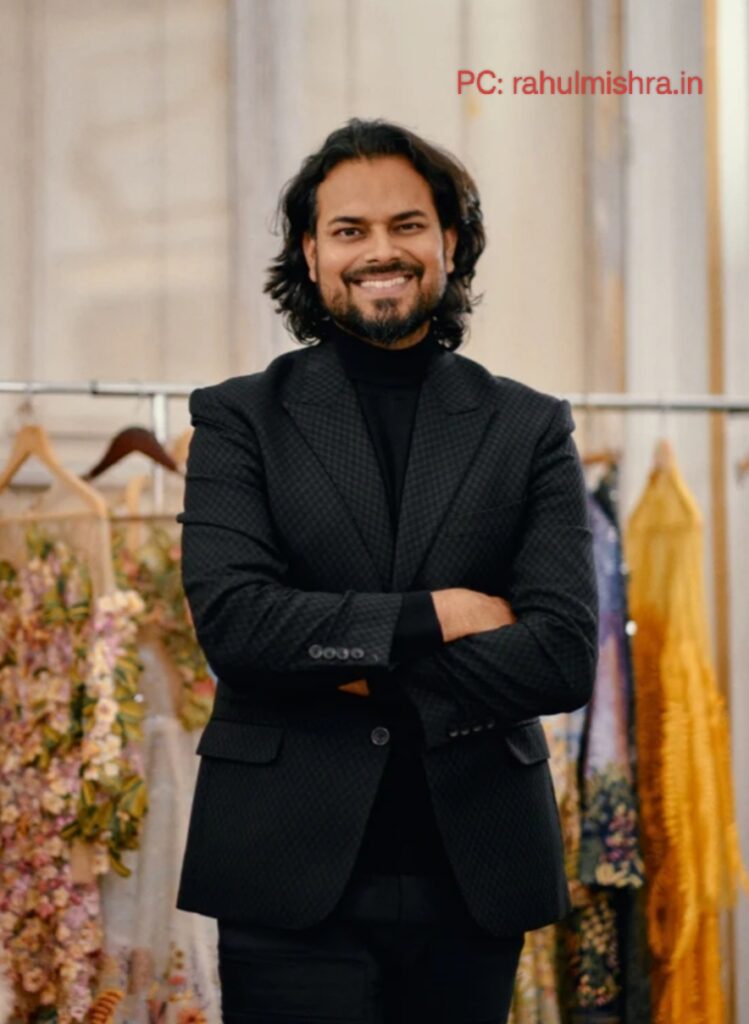The importance of Intellectual Property and the crucial role it plays in securing businesses, is well known and appreciated across industries, the fashion industry being no exception. The designs, patterns, and colours of clothes and accessories created by designers, if original and artistic, can be protected. Safeguarding unique fashion designs, trademarks, and brand identities is more than a mere legal requirement; it’s a crucial strategy for business growth and protection.
In a recent trademark and copyright dispute involving the famous Indian fashion designer, Rahul Mishra (plaintiff), the Delhi High Court ruled in his favour, marking a significant victory for the protection of his brand and intellectual property.
The Case, Explained
Rahul Mishra is a leading Indian Fashion designer who creates luxurious and handcrafted clothes under his own fashion label named “Rahul Mishra.” He is the first Indian designer to be invited to showcase at the Haute Couture Week in Paris and the first Indian designer to win the prestigious International Woolmark Prize in 2014 at Milan Fashion Week. Actress and Rapper, Queen Latifah, made an appearance at the 67th Annual Grammy Awards recently, dressed in an outfit designed by Rahul Mishra.
In the fashion industry, where trends change in the blink of an eye and great many designers come and go, Rahul Mishra has achieved remarkable success, making a lasting mark for himself in the industry. He is the registered proprietor of the trademark “Rahul Mishra” in India and also internationally. The designs of the clothes that he creates are original and artistic works thereby qualifying for copyright protection. He holds the copyright to these designs, including the shape, configuration, pattern of the clothes he has designed. The fashion label also hosts multiple fashion events to showcase its original and artistic creations to audiences worldwide. The images of various models and famous personalities, captured during runway shows featuring his handcrafted and exquisitely designed clothing, are also considered original artistic works under Section 2(c) of the Copyright Act, 1957. As a result, he holds exclusive rights over these images under the Copyright Act, 1957.
Apart from its flagship stores and duly authorized multi-brand retail outlets, the brand also carries business through its official registered domain name/website. Through this platform, consumers are regularly updated on each season’s themed collection of exquisitely designed luxury fashion apparel, as well as on all fashion shows and events where its seasonal collections have been showcased.
The dispute arose when the plaintiff discovered that John Doe, unknown defendants, were selling counterfeit dresses that were exact replicas of the plaintiff’s designs through an impugned website at heavily discounted prices, a fraction of the cost at which the plaintiff sell its dresses. The images/photographs posted on the impugned website of the dresses were taken from the plaintiff’s runway shows. These counterfeit products copied Mishra’s designs, styles, and artistic works, thereby infringing upon his copyrights, trademarks, and design rights. Additionally, the sale of these counterfeit products caused significant harm to the reputation of the fashion label and led to consumer confusion regarding the authenticity of the brand.
Copyright infringement occurs when any person, without a licence granted by the copyright owner:
• Performs any act that is exclusively reserved for the copyright owner;
• Permits a place to be used for the public communication of the work, thereby constituting an infringement;
• Creates, distributes, or imports infringing copies of the work into India.
Judgement
The Court noted that the plaintiff is the registered proprietor of the trademark ‘Rahul Mishra’ and the owner of the copyright in the original artistic works and the designs of the dresses under the Copyright Act, 1957.
It stated that the impugned trademark is deceptively similar to the plaintiff’s trademark.
The Court concluded that the plaintiffs had made out a prima facie case for grant of an ex-parte interim injunction, which is also a dynamic injunction. It stated that irreparable harm would be caused to the plaintiffs if the interim injunction was not granted. As a result, the Court restrained John Doe from using, soliciting, manufacturing, selling, offering for sale, importing, exporting or advertising in any manner including on the internet and e-commerce platforms, directly or indirectly dealing in goods bearing the impugned trademark and also ordered John Doe to suspend the impugned website.
Conclusion
While the next hearing of the case is scheduled for April 7, 2025, this order reaffirms the rights of the designers and protects the original work they create. It provides assurance to other designers in the fashion industry, who work diligently to create original work, that their rights will not be infringed upon and if infringed, they will be fairly compensated.
This case highlights the importance of Intellectual Property in fashion. This ruling underscore the judiciary’s commitment to protecting intellectual property rights in the fashion industry, sending a strong message to counterfeiters and upholding the integrity of original artistic work in India.
Authors: Urvashi Joshi & Walusha Vaz

